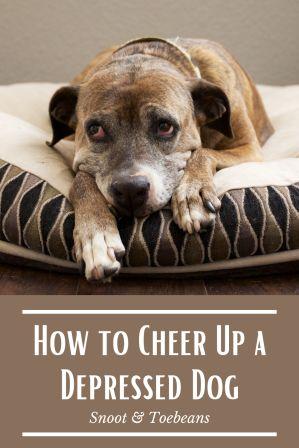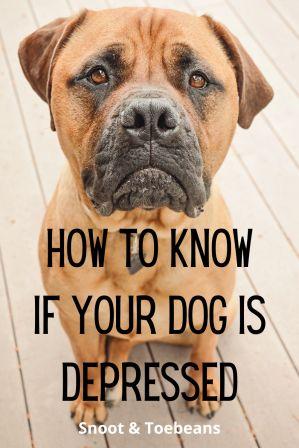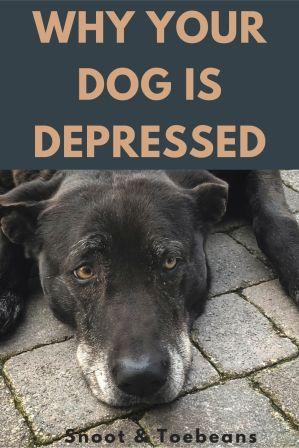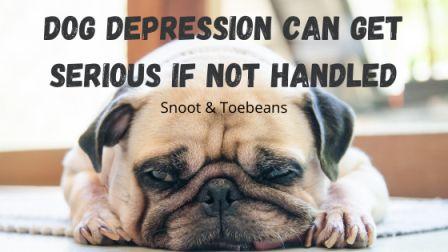Disclosure: My dog blog is supported by dog parents just like you. I only recommend products that I would use on my dogs. All opinions expressed here are my own. I sometimes earn a small affiliate commission, at no extra cost to you, when you click through the affiliate link and purchase something. You can read more about my affiliate policy here.
Y’all, I am positive one of my dogs is depressed! Have you ever wondered if dogs get depressed?
We are in the process of moving. As a result, my female morkie, Bella, is very aware that change is in the air. We’ve moved before with her and her morkie brother, Edward. However, it was just across town. In addition, I really didn’t do much packing and was able to make several trips.

But, this time is different. We are moving across a couple of states, so the packing boxes are piling up around us. Bella has become the ultimate moper while watching me pack and securely tape boxes.
She watches with big, sad eyes and her tail is tucked under her legs. Furthermore, her eating has become very finicky. In addition, she is more restless during the night.
Above all, she is just more gloomy than her normal chippery self. So, Bella is proving to me that dogs get depressed and it can look like human depression.
9 Signs That Dogs Get Depressed
Many veterinary behaviorists and experts say they can’t identify the similarity between dog and human depression. Why? Well, you can’t really ask a dog how they feel. I mean, I guess you can, but they can’t vocalize the answer with words.
“Dogs can absolutely feel depression and anxiety. We can see it in the body language and in their actions. But to go so far as to call it sadness—I’m not sure that would be the right term.”
Dr. Carlo Siracusa, clinical assistant professor of behavioral medicine at the University of Pennsylvania School of Veterinary Medicine in Philadelphia

So, if dogs can feel depression and anxiety, then certainly dogs get depressed. As a result, what signs are our dogs showing us through their body language and actions?
- loss of interest in things that were once exciting
- reduced activity
- oversleeping or restlessness
- moping and/or acting insecure
- loss of appetite
- increased irritability and/or sudden aggression
- more frequent household “accidents”
- excessive licking
- hiding

Most importantly, dogs suffering from depression may exhibit signs differently. So, it is best to pay attention to any unusual body language or actions particular to your dog. Please consult your veterinarian, because depression can lead to something more serious.
What Causes Dog Depression?
There are several factors that can contribute to dog depression. Moreover, it occurs when there’s a major change in your dog’s daily routine.
“Some dogs are much more sensitive to change than others, and certain variables can affect dogs differently. But overall, dramatic changes in a dog’s life can certainly lead to depression.”
Dr. Daniel Inman, a veterinarian at Burlington Emergency Veterinary Specialists in Williston, Vermont
So, just what are some of those variables that can lead to dog depression?
- environmental conditions and changes, such as moving to a new home in a new location
- adding a new human family member to your home, such as a spouse, or a baby
- a new pet being added to the family, such as a cat, or another dog
- the loss of a dog parent, or another family member
- losing a pet companion
- suffering from injury, disease, or abuse
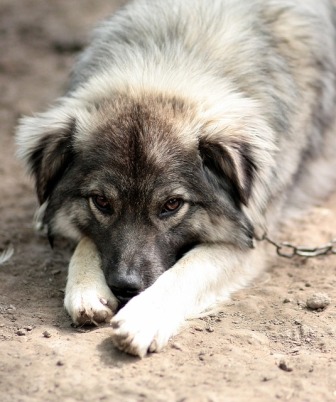
- being tied or chained to a post
- being socially isolated for long periods of time
- not getting enough exercise
- absorbing their dog parent’s depression
Consequently, our dogs can’t tell us they are feeling depressed or why they are feeling this way. So, we have to rely on our observations to determine that our dog is, in fact, depressed.
Tips to Cheer Up Your Depressed Dog
Studies show that dogs can typically bounce back from depression. For instance, they can get better within a few days or months. However, this will depend on the severity of the depression.
If your dog is depressed, there are some things you can do to cheer her or him up.
- Give your dog some extra attention. For example, a good belly rub or a “sniff” walk around the block can cure the “blues.”
- Play music for your dog! Yep. Dogs like to listen to music and even have a preference. Who wouldn’t cheer up listening to a little Bob Marley?
- Socialize your dog with other dogs. Take a trip to the dog park or take your dog to a doggy daycare. Furthermore, you can set up some playdates with your friend’s dogs.

- Take your dog for a new experience. Does your dog like treats? There are lots of restaurants and eateries across the country who cater to our dogs. They provide some free and some not free goodies that are fun. You can grab our FREE “foodie” guide just for dogs right here. In addition, this will help you pick out some fun places to visit giving your dog a new experience.
- Get your dog outdoors for some fresh air and exercise. Take an early morning walk, or play fetch or catch in the backyard. Certainly, making the walk longer and extending the play time will help even more.
- Be happy and energetic. Remember your dog picks up on your emotions. So, if you are sad, they will probably be sad. On the other hand, if you are happy, then they will probably be happy.
If these ideas don’t help, contact your veterinarian to make sure there is not an underlying medical issue.
To Sum Up
Overall, when a veterinarian describes a dog as depressed, the dog is displaying a change in normal behavior. Therefore, it is so important for us to be observant to any change when our dogs get depressed.
In addition, we have to be aware of what normal behavior looks like for our dogs. This is important to be able to see the change. Remember, there can be serious consequences if the depression goes too long. So, if nothing you are doing is helping, take your dog to your veterinarian.
How do you cheer your dog up? We would love to hear about it in the comments below.
You might like these blog posts from our blog:
You can save the information in this post to your Pinterest account by using one of the images below to pin.

